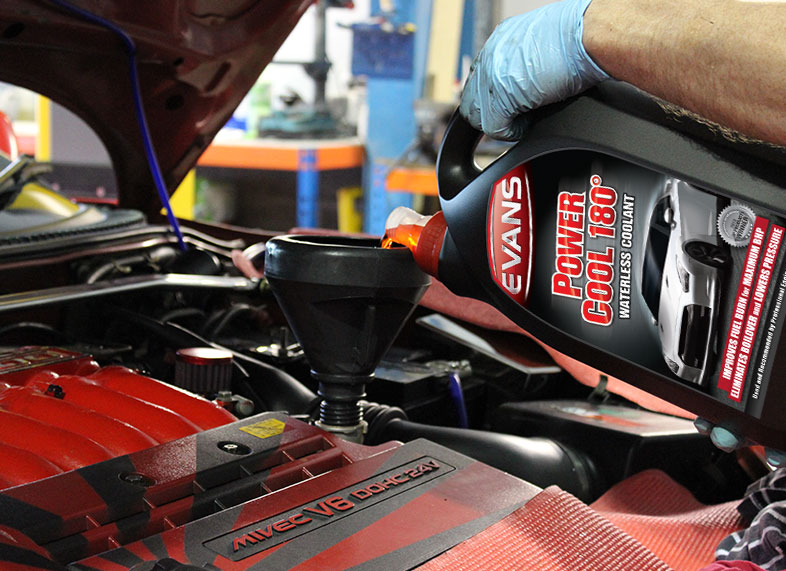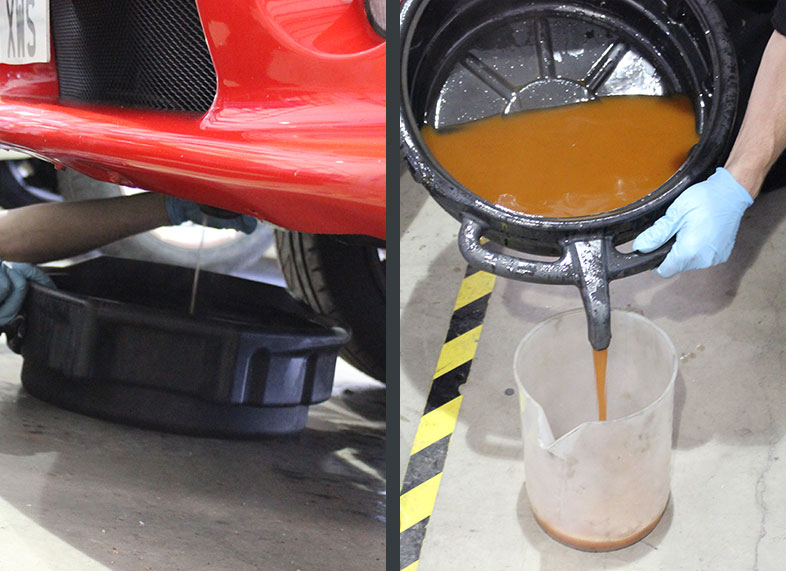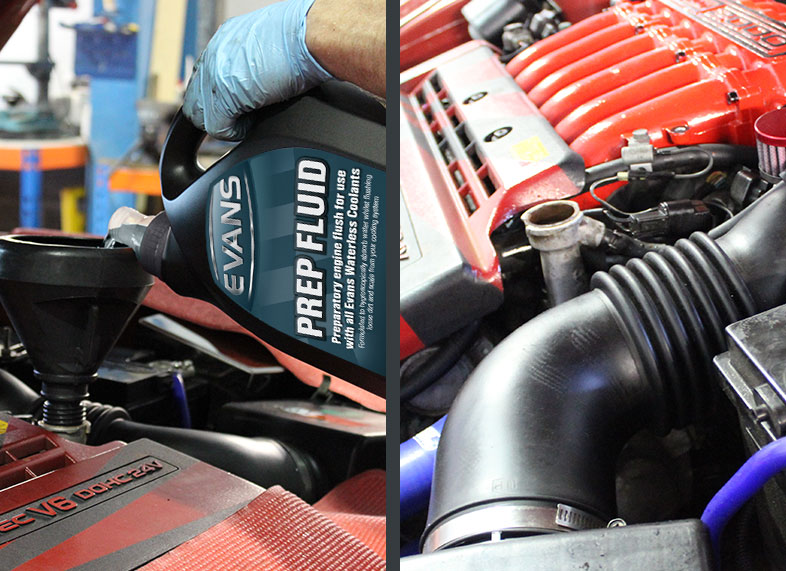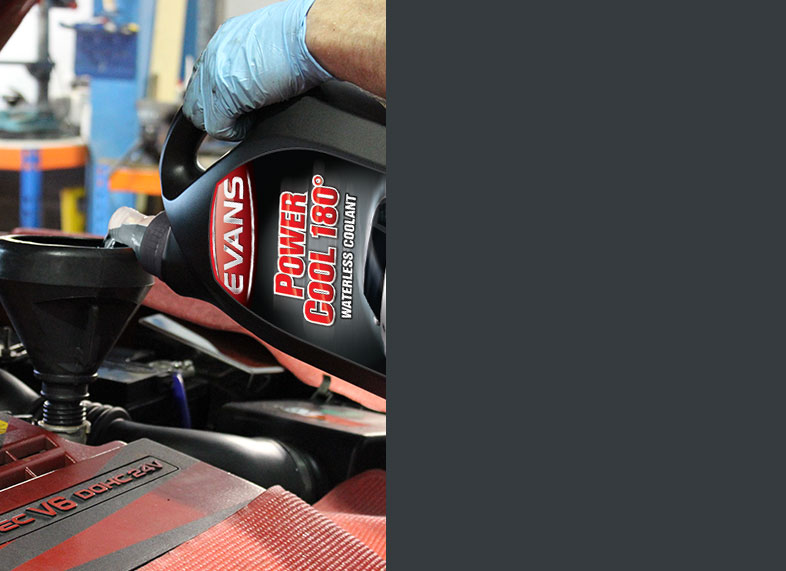info@waterless180.com
Technical Helpline: 01792 572299
info@waterless180.com
Technical Helpline: 01792 572299

Published: 16/03/2015
The primary objective of converting to Evans Waterless Engine Coolant is to eliminate all of the problems associated to water, whilst increasing reliability and engine life. Specifically, to prevent overheating, corrosion, erosion, pressurisation and detonation.
Conversion from a water-based coolant to Evans is a straight forward process that can be undertaken by anyone with some basic experience in engine mechanics, provided the instructions below are adhered to. The time to complete a conversion will depend on several factors including experience, engine design, and workshop/tool facilities - we recommend the DIY enthusiast allow 2 hours and a professional mechanic 1 hours. If several engines are to be converted simultaneously then the average time taken will reduce with confidence and practice - Evans technicians usually complete a bike engine conversion in 60 minutes, sometimes less.
If the engine to be converted is currently filled with a water-based coolant then a two-step procedure is involved, Steps 1 - 24 below. However if the engine is 'dry' then it's a simple case of filling with the appropriate Evans coolant and making sure all air has been vented from the cooling system, Steps 22 - 24 below.
Evans Prep Fluid is specifically formulated to hygroscopically absorb any water-based coolant remaining in the cooling system after initial drain. Because certain parts of the cooling system might not drain out with gravity, and it would take too long to disconnect every pipe etc., installing a scavenging fluid is the most practical method of removing all the water-based coolant. The Prep Fluid is not formulated to chemically clean the engine of rust and scale, but the process of circulation and draining will help remove any loose sediment.
If you have any questions prior to or during the conversion process please feel free to contact Evans HQ or any of our accredited conversion centres.
Do not work on a hot engine, wear appropriate safety gear and read all the instructions before doing anything.
Whenever possible verify the total cooling system capacity, to ensure you have sufficient Prep Fluid and/or Evans coolant to complete the conversion. If it is not possible to confirm the capacity then drain the cooling system and measure how much fluid comes out - add 10% for coolant that cannot be drained.
Locate cooling system drain-valve or drain-plug and check it operates and/or is not seized etc. - there is no point proceeding if the engine cannot be drained.
Run engine up to operating temperature and where appropriate open (and leave open) all heater-matrix controls.
Once up to temperature and pressure inspect cooling system components to identify any existing leaks or badly worn components.
Where necessary carry out repairs to ensure the engine coolant is retained inside the cooling system - this step is appropriate whether converting to Evans or changing out any coolant. Note: Evans coolants will exert very little pressure on hoses, radiator seams etc. but if a small leak or drip is evident better to replace the faulty part prior to conversion.
Allow engine and coolant to cool.
Carefully remove the radiator or expansion tank cap.
Place a suitable tray underneath the drain-valve or drain-plug.
Open drain valve or remove drain plug and allow water-based
coolant to gravity drain. This might take several minutes.
Once the majority of water-based coolant has been drained it is often beneficial to release the radiator top-hose (clip) and introduce some low pressure compressed air. This is not absolutely necessary as the Prep Fluid will absorb any remaining water, however if 90-98% of the water-based coolant can be removed on first-drain the Prep Fluid can be used two or more times.
Once all the water-based coolant has been drained, verify the volume (in litres or pints) and then dispose of in accordance with associated Evans Safety Data Sheet - available on request.(Fig2)
As recommended in Step 6, replace or repair any obviously faulty or leaking cooling system components.
Close the drain-valve or replace the drain-plug. Reconnect the top-hose and tighten any clips etc.
Fill the cooling system with sufficient Prep Fluid to ensure effective circulation around the complete system. Although it is sometimes possible to use less Prep Fluid than the total system volume, our recommendation is to fill to normal levels.
Leave the radiator or expansion tank cap off, as this will enable any trapped air to be vented.
Run engine up to operating temperature.
As the engine and coolant temperature rises then the coolant will expand. Also, as air is vented from the system it may displace coolant from the radiator or expansion tank. Take appropriate measures to prevent Prep Fluid (or coolant) from dripping onto the exhaust system. Both 50-50 water-based coolants and Evans Coolants can combust under extreme circumstances, including contact with a very (almost red) hot exhaust.
Once all air has been vented and the Prep Fluid has been topped up to the normal working level, then replace the radiator or expansion tank cap.
Inspect cooling system components for leaks. As mentioned in Step 6, Evans coolants exert much less pressure than water-based coolants so the tendency is to prevent leaks. However if the engine to be converted has a predisposition to leak we recommend running the Prep Fluid for a week to verify system integrity.
Repeat steps 7 - 12 (substituting references of water-based coolant with Prep Fluid). As mentioned the Prep Fluid has the potential to be used several times, provided it is stored in a sealed container.
Fill the cooling system with the appropriate Evans coolant for the engine. E.g. Powersports for track, trail and MX bikes, Aero Cool 180? for Rotax aircraft engines, etc. Fill to the same Level Mark as used for water-based coolants. Note: Evans coolants expand by approx 7% by volume, compared with 6% by volume for 50-50 water-based coolants, but they generate ¼ of the vapour pressure.
Repeat steps 14 - 19 (substituting references of Prep Fluid with Evans Coolant).
Affix the aluminium backed 'Evans - Do Not Add Water' red sticker to the radiator/expansion tank cap, plus additional plastic stickers within the engine bay or adjacent bulk-heads.
In the event of engine maintenance, that requires draining of the cooling system, ensure the Evans Coolant is captured and stored in a sealed container prior to refilling and recommissioning of the engine. This is to prevent hygroscopic absorbsion of water-born moisture that will reduce the benefits of using a waterless engine coolant.


Fig1: Draining coolant from the lowest point of the system
Fig2: Verify the volume of the drained coolant is equal to the expected system volume

Fig3: Fill with Prep Fluid to remove any residual water left in the system
Fig4: Leave the radiator cap/ expansion cap off when running up to temperature

Fig5: Fill with the appropriate Evans Coolant